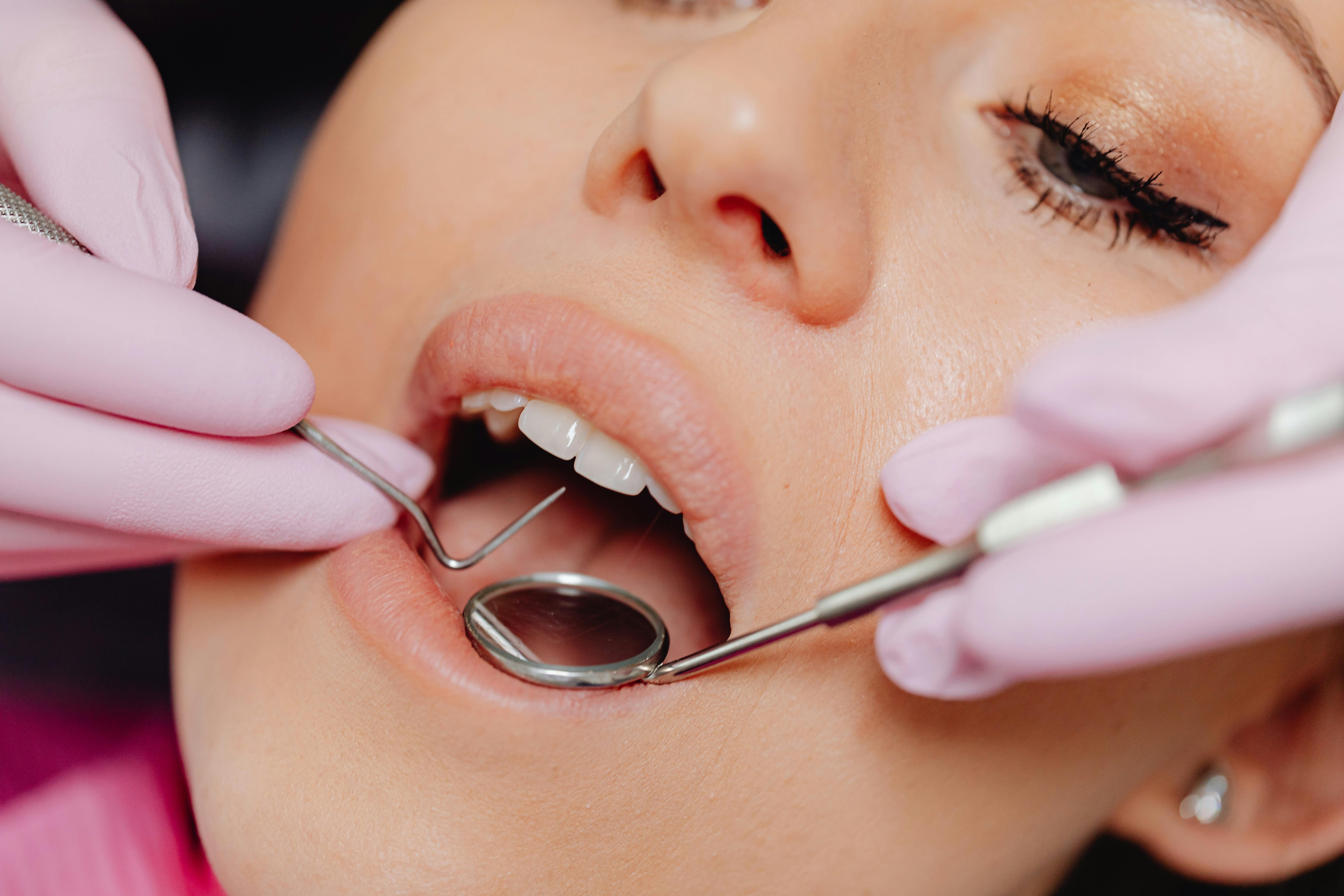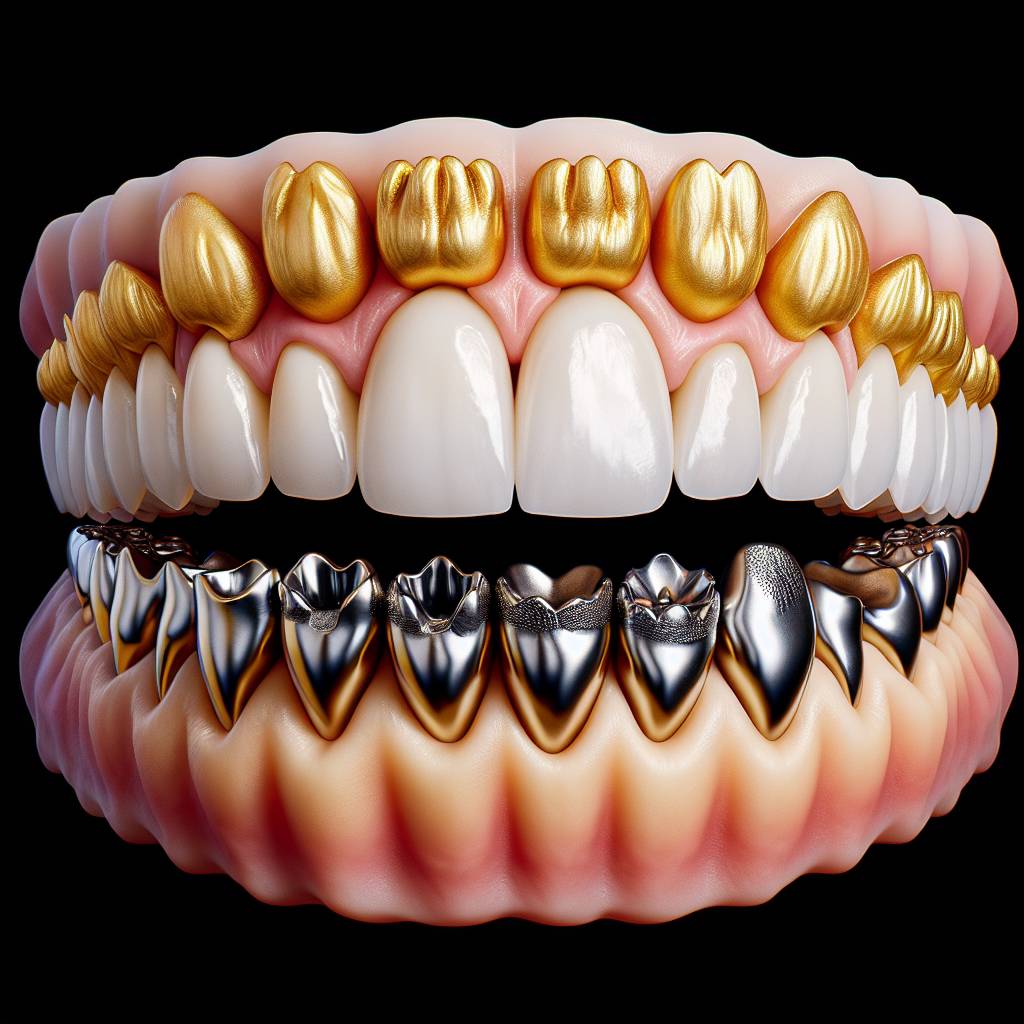Crowns are a popular form of dental restoration that can help to improve the appearance of teeth. A crown is a prosthetic cap that fits over the remaining portion of a prepared tooth. Once in place, crowns look like natural teeth and can be used to correct various aesthetic and functional issues. In this article, we will discuss how crowns look on teeth and the various types of crown materials available.A crowned tooth is a tooth that has been covered with a dental crown. This is typically done to restore the tooth’s shape, appearance and function. A crowned tooth will look like a natural tooth, but the crown itself may be visible along the gum line if it is made from metal or ceramic. The crown may also be visible if it is made from porcelain, but the color of the crown will usually blend in with the natural color of the surrounding teeth.
What Are the Different Types of Dental Crowns?
Dental crowns are a type of dental restoration that is used to cover a damaged or decayed tooth. The crown acts as a protective shield for the tooth, helping to prevent further damage. Crowns can also be used to improve the aesthetics of a smile. There are several types of dental crowns available, each with its own advantages and disadvantages.
The most common type of dental crown is the porcelain-fused-to-metal (PFM) crown. This type of crown is made from a metal base that is fused with porcelain, which gives it a natural appearance. PFM crowns are strong and durable, but they may not be as aesthetically pleasing as other types of crowns.
Another popular type of dental crown is all-ceramic or all-porcelain. This type of crown is more aesthetically pleasing than PFM crowns because it looks more natural and matches the color and texture of surrounding teeth more closely. All ceramic or all porcelain dental crowns are also less likely to cause allergic reactions in some people due to their lack of metal content.
A third type of dental crown is the gold alloy or partial gold alloy crown. This type of crown uses an alloy that contains gold as one of its main components, which gives it strength and durability while still providing a natural look. Gold alloy or partial gold alloy dental crowns are less likely to fracture than other types and are often recommended for molars because they can handle greater bite forces without breaking down.
Finally, there are resin-bonded bridges that use resin material instead of metal or porcelain for the restoration material. Resin-bonded bridges are typically used in cases where only one tooth needs to be restored and require minimal preparation on the surrounding healthy teeth. They offer good aesthetic results while still providing strength and durability.
No matter what type you choose, it’s important to talk with your dentist about which option would be best for you based on your individual needs and goals for your smile.
How is a Crown Placed on a Tooth?
A crown is a form of dental restoration that covers the entire surface of a tooth. It is often used to repair chipped, cracked, or heavily decayed teeth. Crowns are also used to improve the appearance of teeth that may have become discolored or misshapen over time. The process of placing a crown on a tooth involves several steps.
First, the dentist will use x-rays and other imaging tests to examine the tooth and ensure that it is healthy enough for the procedure. Then, they will prepare the tooth by removing any decay or other damage from its surface. Next, they will take an impression of the tooth and create a model for the crown. The dentist may also make temporary crowns to protect the prepared tooth while the permanent one is being made in the lab.
Once all these steps have been completed, it’s time to place the permanent crown. The dentist will check to make sure that it fits correctly and then bond it onto the prepared tooth with dental cement. They may then make any necessary adjustments to ensure that it fits properly and looks natural in your mouth. Finally, they’ll polish it so that it shines like your other teeth!
What Is the Process for Getting a Tooth Crowned?
A dental crown is a prosthetic device placed over a tooth to restore its shape, size, strength and appearance. A crown can help protect a weak or damaged tooth from further damage and can improve the overall appearance of your smile. The process of getting a tooth crowned generally involves two visits to the dentist. During the first visit, the dentist will prepare the tooth by removing any decay and shaping it so that it can accept the crown. An impression will be taken of the prepared tooth, which will be used to make an exact model of your mouth in order to create a custom-made crown. The impression will then be sent to a dental lab where your permanent crown will be created. At your second visit, your permanent crown will be permanently cemented onto your prepared tooth and you’ll have an attractive new smile!
How Long Does It Take to Get a Dental Crown?
A dental crown is a tooth-shaped “cap” that is placed over a tooth to restore its shape, size, strength and appearance. The placement of a dental crown typically requires two visits to your dentist. During the first visit, the dentist will prepare the tooth by removing any decay and shaping it so that the crown can be fitted properly. Impressions will also be taken of your teeth and sent to a laboratory for fabrication of the custom crown. During this visit, you may be fitted with a temporary crown until your permanent one is ready.
At your second visit, the dentist will remove the temporary crown and cement the new one into place. Depending on the type of dental crown you are getting, this entire process can take anywhere between two to four weeks from start to finish. If you require an all-porcelain or all-ceramic crown, it may take longer due to its more complex fabrication process.
It’s important to keep in mind that getting a dental crown is an involved process and requires careful attention from both you and your dentist in order for it to be done properly. Your dentist will provide specific instructions on how long it will take for your particular case so make sure you follow them closely for best results.

What Materials Are Used for Dental Crowns?
Dental crowns are a common dental restoration procedure designed to restore the shape, strength, and appearance of a tooth. A dental crown is typically made from either porcelain, ceramic, or metal materials. Porcelain and ceramic dental crowns are often preferred for front teeth due to their natural look and ability to blend in with the surrounding teeth. Metal crowns are more durable and long-lasting than porcelain or ceramic crowns, but they may not be as aesthetically pleasing.
The material used for a dental crown depends on the individual patient’s needs and preferences. A dentist will usually discuss the different options with the patient to determine which material will be most appropriate based on factors such as cost, aesthetics, longevity, and durability.
Porcelain is one of the most popular materials used for dental crowns because it closely mimics the look of natural teeth and can be customized to match the surrounding teeth. Porcelain is also very strong and resistant to staining or discoloration. Ceramic is another popular choice for dental crowns because it is strong yet lightweight and can be tinted to match existing teeth.
Metal materials such as gold alloys or base metal alloys are also commonly used for dental crowns because they are highly durable and long lasting. Gold alloys may also provide additional protection against wear over time compared to other materials such as porcelain or ceramic. Base metal alloys are less expensive than gold alloys but may not be as aesthetically pleasing due to their darker hue.
In some cases, a combination of two different materials may be used in a single dental crown in order to combine strength with aesthetics. For example, a porcelain-fused-to-metal (PFM) dental crown combines metal reinforcement with an outer layer of porcelain that can be customized to match existing teeth. This type of dental crown offers both durability and natural looking aesthetics.
No matter what type of material is chosen for a dental crown, it is important that it fits properly in order to provide maximum protection against damage or decay over time. A dentist will take careful measurements of the tooth before fabricating the restoration in order to ensure an optimal fit when it is placed on the tooth.
What Are the Benefits of Having a Tooth Crowned?
A tooth crown is a dental restoration that covers the entire visible portion of a damaged or decayed tooth. Crowns can be made from a variety of materials, including porcelain, metal alloys, and resin. When placed on a tooth, a crown can provide strength and stability, as well as improve the appearance of the affected tooth. The benefits of having a tooth crowned include:
1. Improved Strength and Durability: A crown can provide additional strength and durability to a damaged or decayed tooth. It prevents further damage from occurring to the affected area, which can help preserve the overall health of the teeth. This is especially beneficial for teeth that have sustained significant damage due to an accident or decay.
2. Improved Appearance: Crowns are often used to improve the appearance of teeth that are discolored, misshapen, or chipped. They can also be used to close gaps between teeth or restore teeth that have been worn down over time. By covering up imperfections in your teeth, crowns can help you achieve an aesthetically pleasing smile.
3. Improved Comfort and Functionality: Crowns are designed to fit snugly over your existing teeth so they don’t cause any discomfort when you bite down or chew food. Additionally, with a crown in place, you may find it easier to chew food without experiencing pain or discomfort due to sensitivity in your damaged tooth.
Overall, having a tooth crowned provides numerous benefits that can improve both your oral health and overall appearance. It is important to talk with your dentist about whether getting a crown is right for you in order to ensure you get the best possible results from your treatment plan.
How Much Does It Cost to Have a Tooth Crowned?
Having a tooth crowned is an important procedure that helps protect weakened teeth from further damage. Crowns are also used to improve the appearance of a tooth or as part of a dental bridge. The cost of having a tooth crowned depends on the type of crown chosen, the location of the dentist, and other factors.
The most common type of crown is made from porcelain fused to metal, and this typically costs between $800 and $1,500 per crown. All-porcelain crowns are more expensive, ranging from $1,100 to $2,000 per crown. Gold-based crowns are usually the most expensive option and can cost up to $3,000 per crown.
In addition to the cost of the material used in the crown itself, patients may also need to pay for additional treatments such as root canals or gum disease treatments before getting a crown. The cost of these treatments can range from around $200-$1,000 depending on their complexity.
The location of the dentist also affects the cost of having a tooth crowned. Dental practices in urban areas tend to be more expensive than those in rural areas due to higher overhead costs associated with real estate and staff salaries.
Patients may be able to save money by shopping around for different dentists or by using an insurance plan that covers some or all of the costs associated with having a tooth crowned. It is important for patients to check with their insurance provider before getting any dental work done in order to determine what is covered and how much they will need to pay out-of-pocket.
In conclusion, the cost of having a tooth crowned can vary significantly depending on several factors including the type of crown chosen, additional treatments required beforehand, and geographic location. Patients should take time to research different dentists and insurance plans in order to get an accurate estimate for their procedure before making any decisions about treatment options.

Conclusion
Crowns are an excellent option for restoring the look and function of a damaged tooth. They are strong and durable, helping to keep your teeth healthy for many years. They can also be designed to look and feel like natural teeth, blending in with your existing teeth. Crowns can be a great solution for people who want to improve their smile without a full set of veneers or braces.
Having a crown placed on your tooth can help you regain the confidence you need to smile confidently. The process is simple and relatively painless, meaning you can have your new crown within just a few visits. With proper care and maintenance, your crown will last for many years, helping you maintain your beautiful smile.
No matter what type of dental treatment you decide on, it’s important to talk to an experienced dentist about the best options for you. By working with an experienced professional, you can get the right solution that fits your needs and budget. With the right care and maintenance, Crowns can provide long-term results that will help you maintain a beautiful smile for life.

